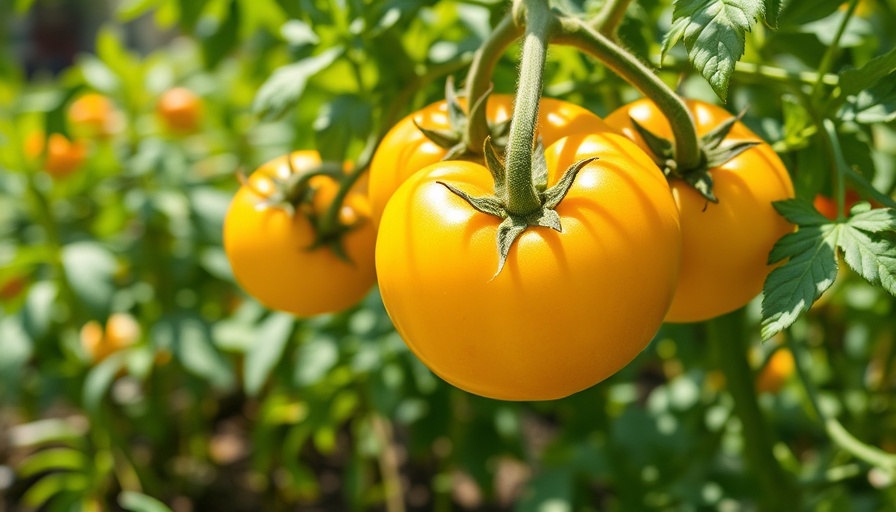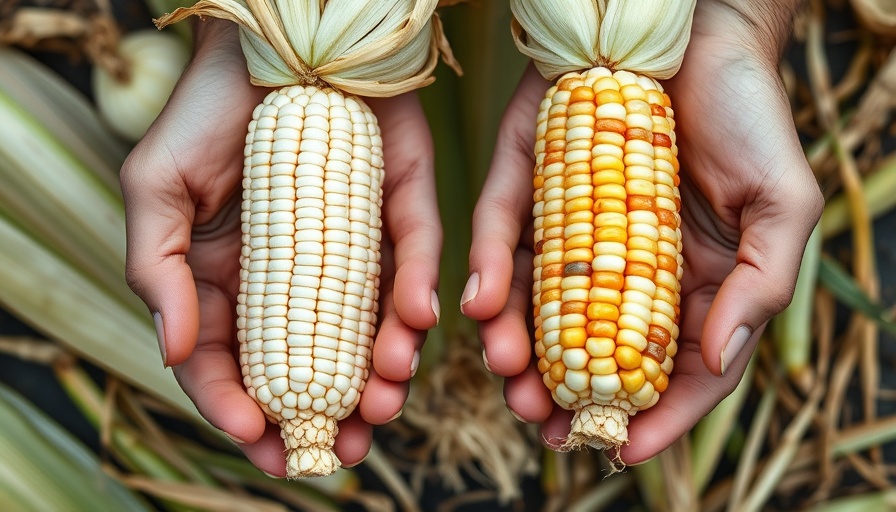
Unveiling the Beauty and Benefits of Pole Tomatoes
When it comes to summertime gardening, few plants can match the delight that pole tomatoes bring to your backyard. Not only are they visually stunning as they climb trellises and fences, but they also produce abundantly in the warm months, making them a gardener's favorite. In this article, we're diving into the unique characteristics of several pole tomato varieties that you can grow at home, ensuring your garden is as vibrant as possible this season.
Why Choose Pole Tomatoes?
Pole tomatoes, or indeterminate varieties, have the remarkable capability of growing indefinitely, continuously producing flowers and fruits throughout the warm season. They thrive in environments with long periods of heat and sunlight, making them the perfect choice for passionate outdoor living enthusiasts looking to enhance their gardens. This article will not only guide you through some of the best varieties but also offer tips tailored to maximize your gardening efforts, whether you are planting in raised beds, containers, or traditional plots.
Top Varieties of Pole Tomatoes to Grow
Here are some of our favorite pole tomato varieties that are sure to elevate your home gardening experience:
- Carbon Pole Tomato: Known for its rich color and flavor, this variety produces dark, juicy tomatoes that are perfect for sauces and salads.
- Chadwick Cherry Pole Tomato: This variety is ideal for those who love snacking on sweet, juicy cherry tomatoes straight from the vine.
- Tropical Sunset Pole Tomato: With an eclectic color palette of red and orange, this eye-catching variety adds visual appeal to your garden while delivering exceptional flavor.
- Brandywine Tomato: A classic heirloom with large, beautifully ridged fruits, the Brandywine comes in red and yellow variants, each bursting with delicious flavor.
- Bumble Bee Stripes Series: These stunning cherry tomatoes not only offer unique hues but also a delightful taste that will impress any guest.
Getting the Most Out of Your Pole Tomatoes
Growing pole tomatoes successfully hinges on understanding their needs and caring for them throughout the season. Here are some practical tips that work well for our favorite varieties:
- Optimal Planting Locations: Find spots that receive ample sunlight and warmth—these tomatoes enjoy basking in the sun and tend to flourish with minimal shading.
- Utilizing Trellises: As they are climbers, ensuring proper support with trellises or cages promotes healthier plants and easier harvests.
- Soil Quality: Invest in nutrient-rich soil and consider regular composting as it feeds the plants and improves the overall health of your garden.
- Watering Techniques: Pole tomatoes require consistent moisture, especially in hot weather. Be mindful not to let the soil dry out entirely, but avoid overwatering as well.
Integrating Tomatoes into Your Outdoor Living Space
Growing these vibrant pole tomatoes can also transform your outdoor living area. Think of these beautiful plants not just as food sources, but also as integral design elements in your garden. You might create a cozy corner in your backyard with rustic trellises adorned with colorful tomatoes, or incorporate beautiful pots for a container garden that aligns with modern outdoor kitchen designs. The splashes of color from the tomatoes can pair beautifully with flowerbed layouts you craft or complement low-maintenance landscaping themes.
Harvesting and Enjoying Your Crop
Once your pole tomatoes start to mature, the excitement of harvesting them adds joy to the gardening process. You can consume your tomatoes fresh, toss them into salads, or use them in various culinary delights—sauces, salsas, or even as a topping for grilled dishes. Share them with friends and family, or even host a small gathering to showcase your crop!
Conclusion: Take Action and Start Planting
The beauty of growing pole tomatoes lies not only in the fruits they yield but in the bright, living tapestry they create in your garden. Ready to dive into your gardening project? Start planning your garden layout using seasonal planting guides to choose the perfect moment to plant these incredible varieties. With the right care, your backyard can become a colorful oasis brimming with fresh produce this summer!
 Add Row
Add Row  Add
Add 




Write A Comment